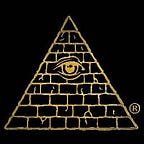Dungeon Fantasy Designer’s Notes 5: Jaws That Bite, Claws That Catch
By Sean Punch
If you’ve been reading my Designer’s Notes, you’ll know that the Dungeon Fantasy Roleplaying Game lets you create characters with powerful abilities and gear (using the Adventurers book), that magic-wielding adventurers have spells in their arsenal (from Spells), and that the game offers extensive combat rules (in Exploits). Anybody who’s remotely familiar with fantasy gaming will know why this is so, but for newcomers: It’s all about slaying monsters — usually to take their treasure, though genuine heroes care about eradicating Evil.
This means the game needs monsters. That’s why it includes a whole book of such creatures, imaginatively titled Monsters.
The heart of this work is a collection of baddies that would like nothing better than to shred, crush, burn, dissolve, and otherwise murder adventurers. Depending on how you count — because several entries describe distinct subtypes (e.g., fire and water elementals both fall under “elemental” but are almost opposites) — there are more than 80 critters here.
Some of these are based on real-world animals. For instance, lions and tigers and bears are customarily completely loco in fantasy, hunting even large, noisy groups who wave fire around. More common are giant and mutant (“dire”) versions — because garden-variety apes, bats, jellyfish, leeches, rats, snakes, spiders, weasels, wolves, etc. are insufficiently strong, savage, or creepy.
Real-world mythology and folklore also contribute creatures, such as the ancient gryphon, Cretan minotaur, Norse draugr, and Persian karkadann. Traditional stories also provide the basis for monsters that fantasy has elaborated on: golems, every variety of hulking humanoid (e.g., ogres and trolls), vampires, werewolves, and of course dragons. Beyond that, old-timey beliefs have inspired beings that mostly exist only in games. For instance, RPGs associate “elementals” with air, earth, fire, and water; extrapolate wildly from generic terms like “demon” (Monsters includes plenty of those!); and run with the idea of walking corpses, inventing all manner of liches, skeletons, zombies, and undead versions of other monsters.
Not all fantasy classics have clear real-world inspirations. You can’t have a hack ’n’ slash game without entire races of ill-tempered, ravenous, or straight-up evil humanoids (bugbears, lizard men, orcs, vicious pygmies, etc.). You also need a bewildering variety of goo — distinguishing jellies, oozes, puddings, and slimes is crucial for professional monster-hunters. Guest stars from horror, particularly Lovecraft-inspired Things, are essential, too.
Have no fear (or lots of fear): They’re all here. Of course, we’ve often put our own spin on them, and in some cases cut new monsters from whole cloth. As far as I know, you won’t find as-Sharak, ciuaclán, crushrooms, doomchildren, electric jellies, eyes of death, mindwarpers, peshkali, slorn, spheres of madness, or watchers at the edge of time anywhere else.
Most of these come from the GURPS Dungeon Fantasy series — but not all. Gamers who own those supplements will see we’ve shored up glaring holes in the bestiary. Huge snakes and spiders, werewolves and vampires, and those dragons again . . . finally, there are official versions.
Stats for these monsters use a uniform format that makes key abilities, notably attack modes, easy to find. Each creature also has notes discussing tactics, treasures, attitudes, and whatever else seems important. (Mindless slimes don’t have attitudes, tactics, or treasure, so they don’t require the same details as super-genius boss monsters!) These often suggest variants, adding reuse value and variety — whether that means dragons that exhale things other than flame, every color of pudding, or a race’s shamans and leaders.
There are also general notes tackling monster-adventurer interactions at the front of the book. Some of these address ways for heroes to identify creatures, exploit their flaws, and even weasel their way out of fights. Others advise the GM on monster tactics and such practicalities as representing huge, weirdly shaped beings on a battle map. The dividing line between these rules and those in Exploits is arbitrary — but if an idea makes more sense when monsters are involved, it’s probably in Monsters.
Between those general notes and the monsters is a chapter on monster abilities. Many creature traits come straight out of Adventurers — because a lot of critters are monstrous due to not their powers but their degree of power, from massive physical strength to an array of advantages few adventurers have enough character points to afford. Still, certain capabilities are “monsters only,” and as monsters needn’t worry about game balance or point costs, such traits are described concisely, trusting GMs to use them judiciously in play.
Monsters provides everything you need to give adventurers a run for their money — often literally!
